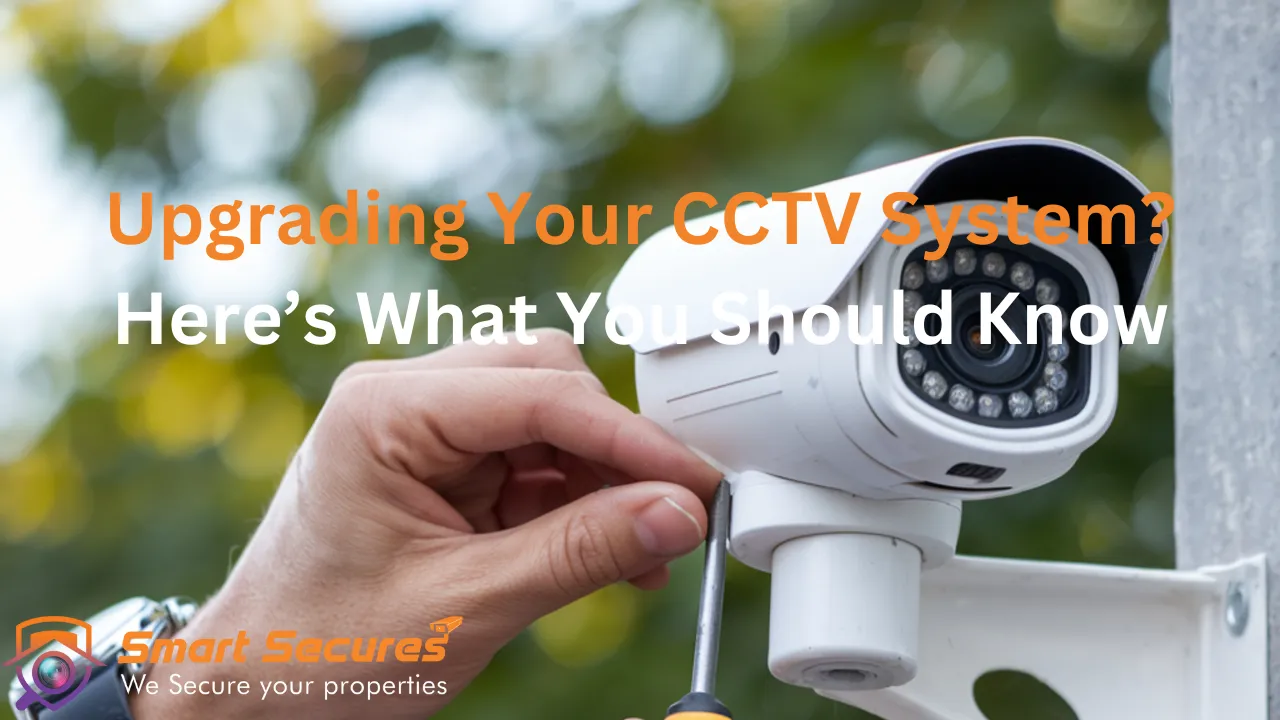Home > Blog > Best CCTV Upgrade Tips for Better Home or Office Security
Upgrading your CCTV system is a smart way to enhance security, improve surveillance, and take advantage of modern technology.

Upgrading your CCTV system is a smart way to enhance security, improve surveillance, and take advantage of modern technology. Whether you're upgrading to HD cameras or integrating the latest features, it’s crucial to understand the benefits and how to maximize your investment. In this guide, we’ll walk you through everything you need to know about upgrading your CCTV system, along with tips to ensure you get the most value out of your upgrade.
Over time, CCTV technology evolves, and older systems can become outdated. Upgrading your CCTV system helps you keep up with the latest advancements, improving security and providing clearer video quality. Here are a few reasons why upgrading your system is worth considering:
Before you jump into upgrading your CCTV system, here are a few factors to consider:
Before upgrading, it's essential to evaluate your existing setup. Identify the areas where your current system is lacking. Do you need better video quality? More cameras for broader coverage? Improved night vision? Answering these questions will help guide your upgrade process and ensure you select the right components.
The best CCTV upgrade tips recommend selecting the right camera for your specific needs. Some common CCTV camera types include:
HD CCTV Cameras: Offer high-definition video for clearer footage.
IP Cameras: Allow remote viewing and control, making them ideal for monitoring your property when you’re away.
PTZ Cameras: Provide pan, tilt, and zoom capabilities, giving you more control over the camera’s view.
Infrared/Night Vision Cameras: Ensure visibility even in low-light conditions.
Modern CCTV systems come with various features that can greatly enhance security. Here are some of the most important features to consider when upgrading:
Motion Detection: Detects movement and alerts you of suspicious activities.
Night Vision: Provides clear footage in low-light or completely dark environments.
Two-Way Audio: Allows communication through the camera, useful for security guards or notifying intruders.
Mobile App Access: Enables remote monitoring via smartphone or tablet.
AI and Facial Recognition: Advanced systems can recognize faces, track individuals, and reduce false alerts.
Upgrading your CCTV system involves more than just buying new equipment. Follow these steps to ensure a smooth transition:
Create a detailed plan based on your needs. Outline what you expect from the upgrade, such as enhanced video quality, additional cameras, or integration with smart security systems. Having a clear objective will make it easier to select the right components.
Invest in modern CCTV equipment that suits your specific needs. Consider upgrading to HD cameras or adding motion detection and remote monitoring features. Look for equipment that is compatible with your existing setup to avoid unnecessary replacements.
Effective camera placement is crucial for a successful CCTV system. Ensure that cameras cover all entry points, hallways, and vulnerable areas such as parking lots or back doors. Make sure they are installed at the right height and angle to capture clear footage without obstructions.
If you’re still using physical DVRs, consider switching to cloud storage. Cloud-based systems offer greater storage capacity and make it easier to access footage remotely. Ensure that the storage solution you choose has enough capacity to handle high-definition video recordings.
Once your CCTV upgrade is complete, test the system thoroughly. Check video quality, and camera angles, and ensure all features such as motion detection and night vision are working correctly. Make sure you can access the footage remotely if you’ve opted for an IP system.
Upgrading your CCTV system offers a host of benefits that go beyond improved security. Some of the key advantages include:
Clearer Footage: HD cameras provide sharp, high-definition images, making it easier to identify people or incidents.
Better Monitoring: With mobile app integration, you can monitor your CCTV system from anywhere, ensuring peace of mind when you’re not on-site.
Enhanced Deterrence: Visible, upgraded cameras act as a stronger deterrent to potential intruders.
Fewer False Alarms: New systems with AI and facial recognition features can reduce the number of false alarms triggered by a movement that isn’t a security threat.
Scalability: Modern systems are more scalable, allowing you to add more cameras and features as your security needs grow.
Upgrading your CCTV system is a valuable investment in your security. With modern CCTV features, you can significantly improve surveillance, enhance security, and benefit from the latest technology. Whether you’re upgrading to HD CCTV cameras, adding smart features, or simply expanding your coverage, a well-planned upgrade will ensure that your property is safe and secure.
Upgrading your CCTV system enhances security, improves video quality, and allows for integration with modern features such as mobile monitoring, motion detection, and HD video.
HD cameras provide clearer, high-definition footage, making it easier to identify intruders or incidents. They are especially useful in areas that require detailed surveillance.
Upgrading your system with modern features such as motion detection, night vision, and remote access can significantly enhance security by providing better coverage and monitoring capabilities.
Assess your current system, choose the right cameras and features, and ensure you have the necessary storage capacity to handle high-definition footage. Also, make sure your new system can integrate with existing equipment.
Not necessarily. Many vendors offer cost-effective CCTV upgrades that allow you to enhance security without replacing your entire system. You can start with small upgrades and expand as needed.

5,852 reviews